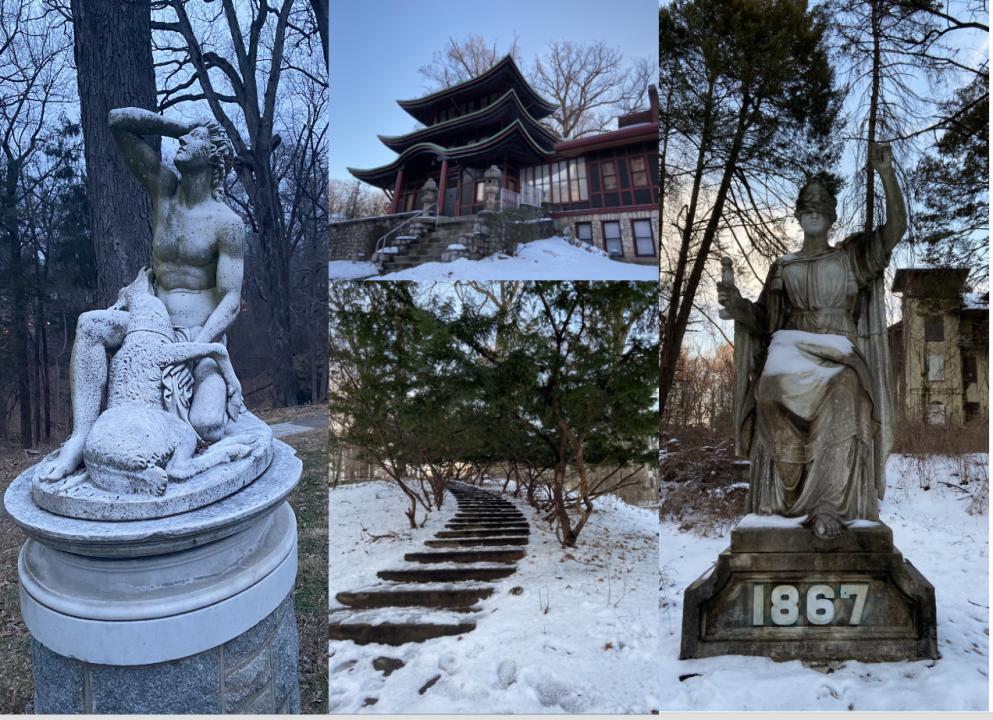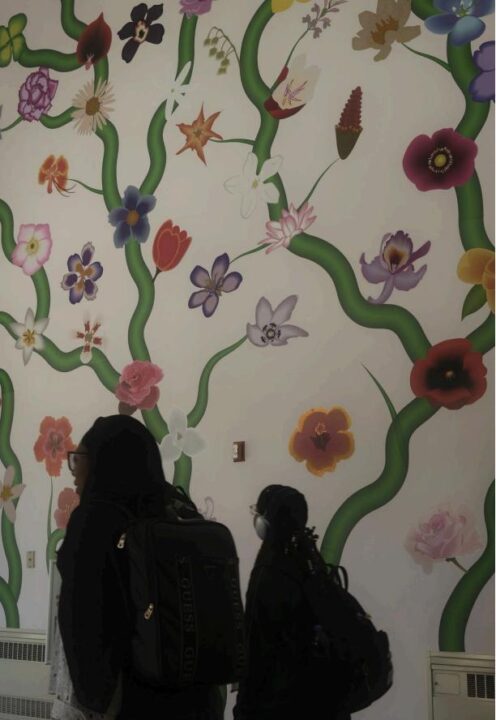In one day, you can take a short drive from your Maryland home to visit another world. Upon arrival, you will see things that you have likely never seen before. You will see a massive Victorian-style complex, a Japanese pagoda and a Dutch windmill. Take a short walk to the nearby forest and you will stumble across an English castle, an Italian villa and various Roman-style sculptures, all at the same destination. This place is the National Park Seminary, and it is located between Kensington and Silver Spring in Montgomery County. Despite its unique history and surreal sights, chances are you have never heard of it.
Unlike many of the beautiful parks in Maryland, this one receives minimal attention. Until a recent popular TikTok, it was almost exclusively known by nearby residents. One should not expect this exclusivity to last, but why should it? This park is too unique, beautiful and historically significant for anyone to claim as their own.
While the otherworldly sights and unique traits of the National Park Seminary already separate it from other places of interest, the history of this park in particular has allowed it to become quite distinctive.
The campus was first developed in 1887, as a resort titled “Ye Forest Inn.” The business venture, however, quickly failed, and the owners sold the property to offset financial losses. The new owners acquired the land in hopes of creating an extravagant school for young women, known at the time as finishing school. Undertaking a major construction project, they built some of the National Park Seminary’s most recognizable features.
Everything, from the Italian villa, to the English castle, to the Japanese pagoda, was constructed by the new ownership, who allowed the sororities on campus to design their own elaborate houses. It is worth noting that daughters of the Kraft, Heinz, Hershey and Chrystler families all attended this school. At the time, it was considered one of the most prestigious women’s schools in the country. Because of this, its development did not spare any luxuries, creating a campus like no other.
Down the line, however, ownership changed hands, under which the school suffered from dwindling enrollment. Soon, the campus converted yet again, this time out of necessity.
At the dawn of World War II, the military annexed many civilian properties, repurposing them to fit their needs. The National Park Seminary was one of these properties.
Many of the campus’ most spectacular pieces suffered tremendous neglect. The army only actively used the site from 1942 until 1977 but would keep ownership of the land until 2004. During these 27 years of non-usage, the National Park Seminary underwent an existential threat. The army knocked down some buildings, and altered the interior and exterior structures of many others, endangering the campus’ historic integrity. Perhaps the biggest loss of all to this period of ownership was the Greek revival-style Odeon Theater, which arsonists destroyed in 1993.
Tensions rose between residents and the military ownership, who even threatened to demolish the site, prompting residents to start a project called “Save Our Seminary.” It would be this project, along with support from Maryland Senator Paul Sarbanes, that would convince the military to partially repair the property, before urging them to release it to developers. That brings us to today.
The developers who took over the land made the park the core of a new residential neighborhood. While non-residents cannot enter the residential buildings, the outdoor premises are open for visitors. The statues, sculptures and abandoned buildings are easy to locate, letting visitors go on an ethereal, historic Easter egg hunt. There is a sense that the more you look, the more you will find.
Entering the park is an unusual experience and may take some planning. Onsite parking is not available to visitors, forcing one to find parking elsewhere. It is best to use the National Museum of Health and Medicine parking lot, which is currently closed because of the Covid-19 pandemic. From there, you are just a few hundred yards away from the park campus, a short walk which grows progressively stranger the closer you get to the destination.
The houses that make up the surrounding neighborhood are not typical, nor is the decor around them. MoCo McMansions line the road, but between them are unfinished buildings constructed in no clear order or style. Close to the park entrance, a garish Spanish mission style house becomes visible. On the house’s property, a bright yellow statue of a Native American stands distinctly. Make a right from this point, and you are in the park.
Well, sort of. As mentioned before, the complex has been re-developed as a residential area, so while it is a park, people live there. The attractions and the housing are not mutually exclusive. While much of the park is uninhabited, some of it is. This means that you will have to appreciate some of the park’s most stunning buildings with the understanding that people live there.
The Japanese pagoda, fully restored, is one such example. Right next to the main Victorian-style complex (which are now apartments), the pagoda may be the first attraction that you see. Its unique styling, as well as its four stories, are impossible to miss. While it may be tempting to get close, or maybe even peek inside, it is important to remember that it is private property.
The same goes for the Victorian-style complex itself, which amongst other buildings was used as student housing during the park’s days as a finishing school. The architecture is strange, and a little confusing, with complex, impractical hallways and walkways. The explanation lies in the history of the building. As a school, the dorms, “were all connected by covered walks to [the] Main Building so that the girls weren’t exposed to the weather when going from building to building.” The whole main complex feels like a labyrinth — lavishly decorated with storytelling statues and fountains that act as place markers, preventing visitors from getting lost or disoriented.
Just past the newly restored Dutch windmill, there is a shift in appearance. It is at this point that the park turns from residential and well-kept, to wild and unruly, from neighborhood to forest. There are statues here, but they are different from the ones that populate the residential area. Eight feet tall and lacking whitewash, they appear entirely unmaintained. This theme of abandonment continues throughout this portion of the park.
The Italian villa and English castle stand tall in the woods, left to rot. Despite their decay, neither building is any less impressive than the Dutch windmill or the Japanese pagoda seen on the main complex, making one wonder why the latest developers did not remodel anything in the forest. The trails in the forest are confusing too. Some seemingly lead to nothing, while others take you to hidden sculptures, or mysterious tree-lined staircases.
No matter what you are looking for, the National Park Seminary certainty has it in store. Architecture aficionados will be bewildered by the strange walkways on the Victorian-style complex, along with the newly restored pagoda and windmill. Urban explorers will find the ruins in the forest astonishing and unique to the Maryland region. Meanwhile, those who feel wistful or crave an escape from the mundane will have their appetites satisfied.
Maybe the greatest value of the National Park Seminary is its existence in the first place. Parks like this are rare and often swept away by urban or suburban development. The fact that the park survived several changes of ownership while remaining true to its history makes it easy to appreciate, all while feeling extremely out of place. Perhaps this is another treasure of the National Park Seminary, a place that itself is out of place, and a place where visitors will undoubtedly feel out of place themselves.
Written by probationary reporter Eric Widemann, ericwid1@umbc.edu


